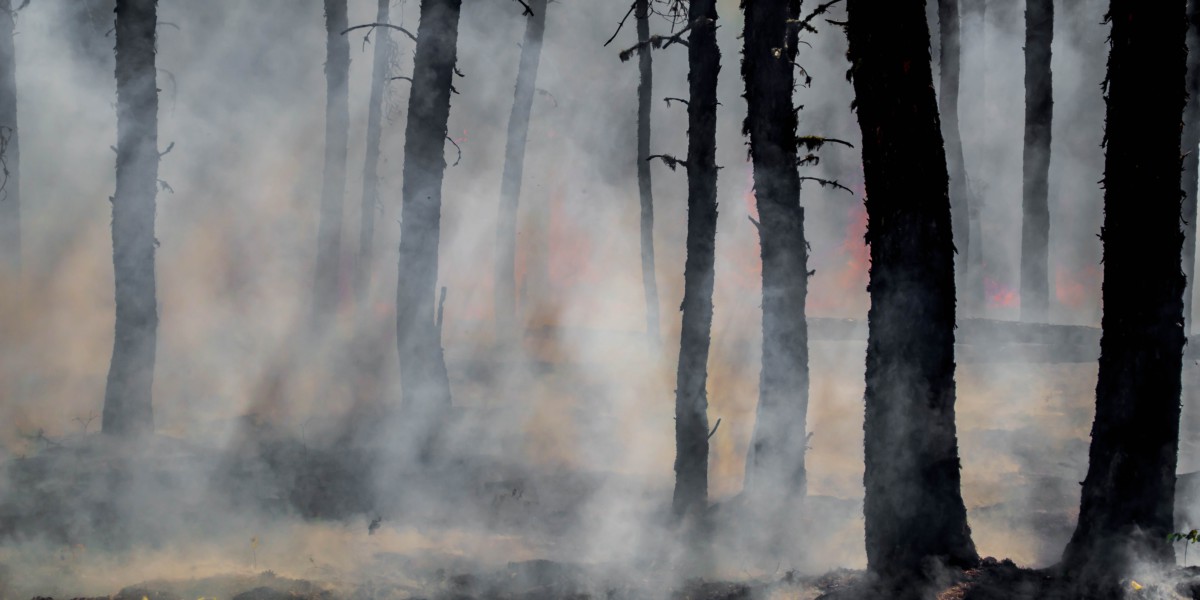Last summer’s bushfires torched 10 million hectares, destroyed more than 3,000 homes and killed 33 people. Thick smoke blanketed parts of Australia for weeks on end and contributed indirectly to hundreds more deaths.
Among the devastation, accusations of unpreparedness and concerns about future management were rampant. In February, the Royal Commission into National Natural Disaster Arrangements was established and tasked with finding ways to improve disaster management in:
- how the federal government coordinates with other levels of government
- resilience to climate change and mitigating disaster risk
- the laws governing the federal government response to national emergencies
Future marked by extreme weather
Released last week, the 579-page report delivers a stark warning about the future of Australia.
It outlines 80 recommendations that cover a broad spectrum of issues from understanding climate risks and boosting firefighting capability, to wildlife protection and leadership of first nations. More specifically, it includes recommendations to speed up the introduction of a nationally consistent disaster warning system, develop air quality forecasting capabilities and to share data and technology more effectively between governments.
Describing their task as “looking to the future” the commissioners say, “Extreme weather has already become more frequent and intense because of climate change; further global warming over the next 20 to 30 years is inevitable.”
It comes as no surprise that floods and bushfires are expected to become more frequent and more intense. The climate has already changed and so must the management arrangements, the commissioners say. “Catastrophic fire conditions may render traditional bushfire prediction models and firefighting techniques less effective.”
In its recommendations, the report calls for a bigger federal role in dealing with disasters including having the power to declare a state of national emergency.
The commission says this doesn’t mean the federal government taking over, but instead aimed at increasing national coordination to prepare better for natural disasters, respond more rapidly (including through the army) and ensure the recovery is focused on making communities more resilient.
Key points
Shortly after the report’s release, the Climate Council summarised the key points:
- Climate change impacts: The Royal Commission acknowledges that climate change fuelled the Black Summer bushfires, and that more dangerous weather conditions for Australia are likely to occur throughout the country in the future due to a warming climate: “As the events of the 2019-2020 bushfire season show, what was unprecedented is now our future.”
- Climate change mitigation: It is impossible to read this report without recognising that stronger action to reduce greenhouse gas emissions is a fundamental part of addressing our escalating disaster risks: “Warming beyond the next 20 to 30 years is largely dependent on the trajectory of greenhouse gas emissions.”
- Hazard reduction: The report takes a nuanced view of hazard reduction activities, acknowledging that while they can reduce risk, their value is diminished in extreme weather fuelled by climate change. It states unequivocally that hazard reduction is not a panacea: “We heard many perspectives from public submissions that describe prescribed burning as, in effect, a panacea – a solution to bushfire risk. It is not.”
- The rising costs of extreme weather and climate change: “Direct and indirect disaster costs in Australia are projected to increase from an average of $18.2 billion per year to $39 billion per year by 2050, even without accounting for climate change. The costs associated with natural disasters include significant, and often long-term, social impacts, including death and injury and impacts on employment, education, community networks, health and wellbeing.”
- Other recommendations: There are many other findings and recommendations, including upgrading our firefighting capabilities, better coordination between agencies, consistent public information and warnings, and prioritising mental health.
- Accountability: The Royal Commission recommends that “the Australian Government establishes accountability and assurance mechanisms to promote continuous improvement and best practice in natural disaster arrangements.” It is accountable to Australians for doing so and should accept and implement all of the relevant recommendations.
It now seems inevitable that Australia will have more hot days and fewer cool days but the report does not make recommendations on climate change policy.
Former Fire and Rescue NSW commissioner Greg Mullins says, “The Federal Government absolutely has to act on the root cause of worsening bushfires in Australia and take urgent steps to reduce greenhouse gas emissions. This clearly means no new coal or gas, and a rapid transition to renewable energy.”
So while the report notes that there is essentially nothing we can do about locked-in warming that is set to occur over the next 20 years, we can change what happens after that.
The implications could not be any clearer: stronger action to reduce greenhouse gas emissions is a fundamental part of addressing Australia’s escalating disaster risks.
With warming largely dependent on the trajectory of greenhouse gas emissions, getting to net-zero emissions is a higher priority than ever.


